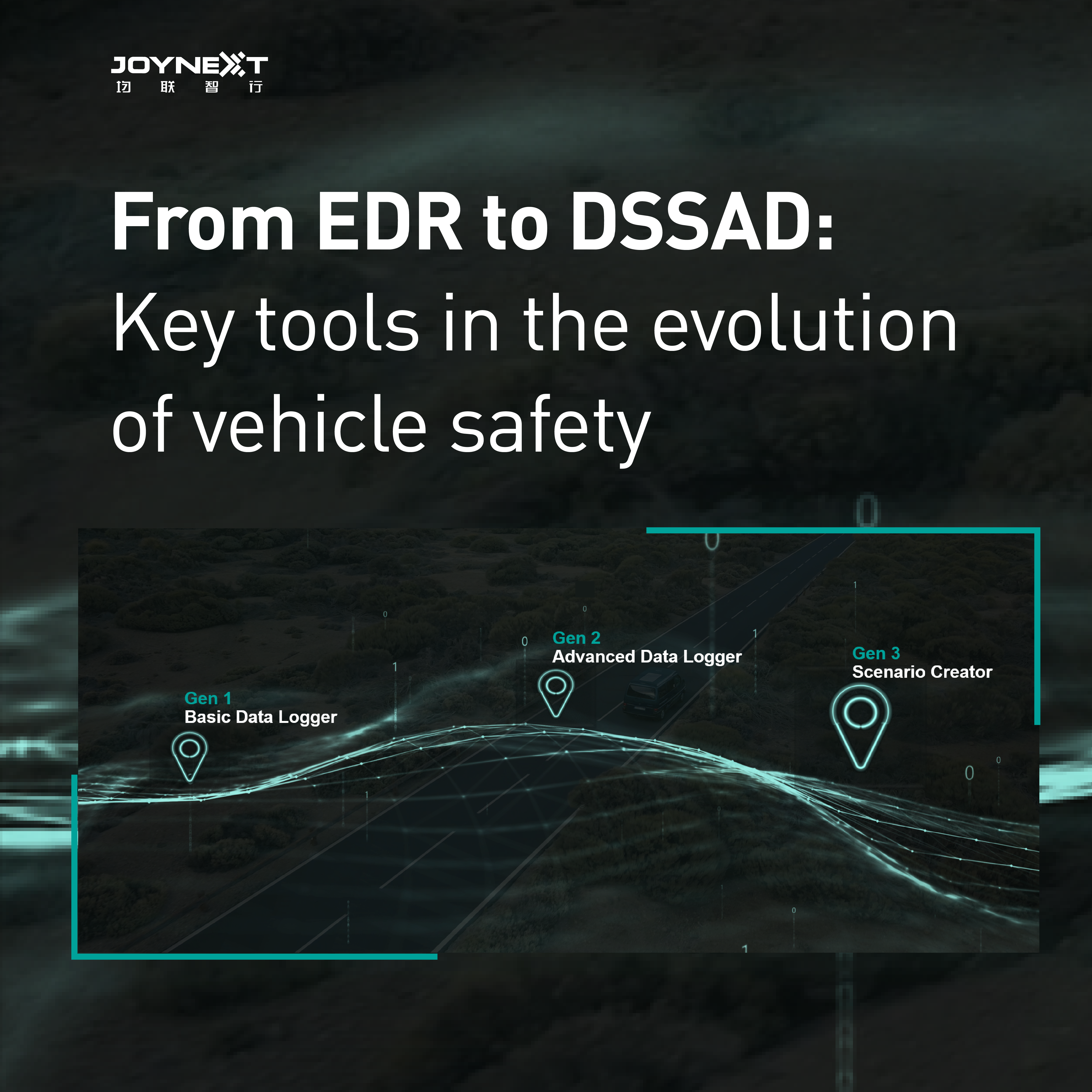In the ever-evolving world of automotive technology, two systems stand out for their significant role in improving vehicle safety and adapting to the shift towards autonomous driving: the Event Data Recorder (EDR) and the Data Storage System for Automated Driving (DSSAD).

1. What is the difference between EDR and DSSAD?
The Event Data Recorder (EDR), which has been an integral part of cars since the late 1990s, works in a similar way to an aircraft's black box. Its primary function is to record critical data in the event of certain triggers, such as an accident. This includes information on vehicle dynamics such as acceleration, braking and the performance of safety systems (seat belts, airbags). EDRs provide a detailed insight into vehicle performance and the impact on occupants during and after a crash.
In contrast, the Data Storage System for Automated Driving (DSSAD) is a more recent development that focuses on the continuous recording of data that is not limited to specific events. DSSAD is essential for understanding the operation and decision making of automated driving systems, particularly at levels 3 and 4 of autonomous driving, where vehicles operate independently for extended periods of time. Unlike EDR, DSSAD also records who controls the vehicle (driver control or autonomous driving system).
2. Why do you need a black box?
Data recording is not only useful, but they are also becoming increasingly important in the context of both traditional and autonomous vehicles. It provides data for accident analysis, prevention and improving overall vehicle safety. By capturing real-world driving situations, recorded data contributes to continuous vehicle improvement, addressing the increasing complexity and interconnectivity of automotive systems.
Legally, the importance of EDRs is underlined by EU regulations. Regulation (EU) 2019/2144 and Delegated Regulation (EU) 2022/545 lay down the technical requirements and usage guidelines for EDRs in the European Union. These regulations ensure that EDRs meet certain standards, contributing to a safer, more transparent, and legally compliant driving environment. The data recorded by EDRs provides objective evidence that is crucial in clarifying liability issues, particularly in scenarios involving both autonomous and human-driven vehicles.
The transition to DSSAD in autonomous vehicles reflects the evolution of vehicle data recording systems. While EDRs focus on event-specific data collection, the continuous data recording of DSSAD is essential for understanding and developing of autonomous driving systems. This continuous monitoring data is the key to the future development of highly complex vehicle systems.
EDR and DSSAD are indispensable instruments in the field of vehicle safety and autonomous driving technology. They provide invaluable data that will improve our understanding of vehicle dynamics, enhance road safety, and help to seamlessly integrate autonomous vehicles into everyday life. As we move into a new era of mobility, these systems will play a crucial role in supporting and guiding this change, backed by legislation to ensure their effective and safe implementation.
JOYNEXT supports this transformation with innovative EDR and DSSAD solutions, making a significant contribution to the development of autonomous driving worldwide.

 JOYNEXT Technology Co., Ltd.
JOYNEXT Technology Co., Ltd.





 ZG Anbei No. 3302090200350 zicp Bei No. 2020035182-1
ZG Anbei No. 3302090200350 zicp Bei No. 2020035182-1